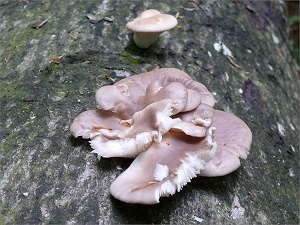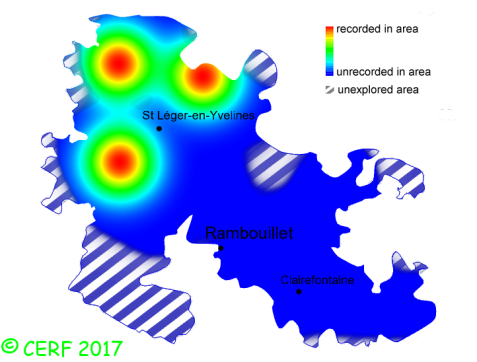| Pleurotus cornucopiae (Paulet) Rolland |
|
|
|
|
|
|
The cap is creamy white to ochre-brown, convex, then flattened, then eventually depressed at the centre or funnel-shaped; its margin is smooth, inrolled and lobed, then wavy and split. The cap surface is pruinose then smooth and shiny. The stem is white to concolorous to cap, eccentric or central, furrowed, arked, rather tough and often branching (fused with other stems), without ring. The flesh is whitish, unchanging; its taste is mild, mealy; the odour is of rancid flour or aniseed; its texture is fibrous, slightly tough. The gills are whitish to pale flesh, decurrent, connected together at the stem base and forming a kind of loose network on stem, thin and more or less crowded . The spore print is pale lilac. This species is saprophytic, sometimes parasitic. It grows on dead wood, in tufts, on dead (sometimes live) deciduous wood, mostly on elm, oak, but also on other deciduous wood. The fruiting period takes place from March to December.
Chemical tests : none. Distinctive features : pale buff to ochre-brown cap; eccentric stem, whitish to concolorous to cap, well formed and often branching, covered with a kind of network originating from the interconnected gills; odour of rancid flour; in tufts on deciduous wood (often elm) Pleurotus cornucopiae is rare and localised in the forest of Rambouillet, and is occasional, more generally speaking . | ||
|
page updated on 14/01/18

